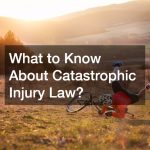Disclaimer: This website shares legal information for educational purposes only and does not constitute legal advice. Please consult a licensed attorney for advice specific to your situation.
Navigating the Union Arbitration Process: A Step-by-Step Guide Through the Stages When disputes arise between parties in a unionized environment, the union arbitration process offers a structured pathway to resolve conflicts outside of the courtroom. Understanding the various stages of this process is essential for anyone involved in or preparing for arbitration. This guide will walk you through the key stages of the union arbitration process, providing insight into what you can expect as your case progresses.
Stage 1: Case Initiation The union arbitration process begins with initiating the case. At this stage, a formal notice is sent to all parties involved, indicating that the arbitration has been filed.
This notification includes important details about the arbitration procedure, such as deadlines for submitting responses and any additional information required from the parties. It also outlines any fees that need to be paid, ensuring that all administrative aspects are addressed before moving forward.
Stage 2: Arbitrator Invitation Once the case is initiated, the next step is the arbitrator invitation stage. In this phase, the arbitration organization will invite potential arbitrators to participate in the case. These individuals are carefully selected based on their qualifications and expertise. The arbitrator reviews the case details, checks for any potential conflicts of interest, and submits a signed disclosure document if necessary. This ensures that the chosen arbitrator is impartial and suitable for the case.
Stage 3: Arbitrator Appointment After the arbitrator invitations have been extended, the arbitrator appointment stage begins. At this point, the parties involved are notified of the appointed arbitrator. They are allowed to raise any objections to the arbitrator’s appointment. If objections are received, the arbitration organization will review them and decide whether the arbitrator should remain on the case or be replaced. If the arbitrator is removed, the process returns to the arbitrator invitation stage to select a new arbitrator.
Stage 4: Preliminary Hearing and Information Exchange The preliminary hearing and information exchange stage involves scheduling a conference call between the parties and the arbitrator. During this call, preliminary issues are addressed, and key details are discussed. This stage also involves setting a hearing date and scheduling the information exchange between the parties. Following the conference call, the arbitrator issues a scheduling order that outlines all important dates and specifics, ensuring that both parties are prepared for the next steps.
Stage 5: Hearing The hearing stage is where the arbitration occurs. During this stage, the parties present their cases to the arbitrator. The presentation can occur in person, over the telephone, or through written submissions, depending on the arbitration rules and the parties’ preferences. The arbitrator listens to the evidence and arguments from both sides. In some cases, the parties may also submit additional written arguments after the hearing based on the arbitrator’s discretion.
Stage 6: Award Issuance Once the hearing is concluded and all evidence has been presented, the arbitration process moves to the award stage. The arbitrator sets a date for issuing the final decision. This decision, known as the arbitration award, outlines the resolution of the dispute and any actions required from the parties. The award is communicated to all parties involved, marking the end of the arbitration process. At this point, the case is officially closed, and the arbitration organization completes its role.
Conclusion Navigating the union arbitration process can be complex, but understanding the stages involved helps ensure a smoother experience. From the initial case filing to the final arbitration award, each step plays a crucial role in resolving disputes effectively. By familiarizing yourself with these stages and participating actively throughout the process, you can better manage expectations and contribute to a more efficient resolution of labor disputes.
Whether you are a union representative, an employer, or an employee, knowing the ins and outs of the union arbitration process will empower you to handle disputes more effectively and understand the implications of union arbitration decisions. This knowledge not only helps in preparing for arbitration but also in ensuring that all procedural requirements are met, leading to fair and timely resolutions.
.



